Everyone LOVES using Harnesses for Great Danes… well, everyone except for me…
I, personally, cringe when I see a dog harness on Great Danes.
Why, you might ask? Well, you came to the right place to hear my rant about why I hate Great Dane harnesses.
Let’s discuss the common dog harness that both you and your dog love so much (well, at least you do) and determine whether or not this tool is actually right for your dog’s health and well-being.
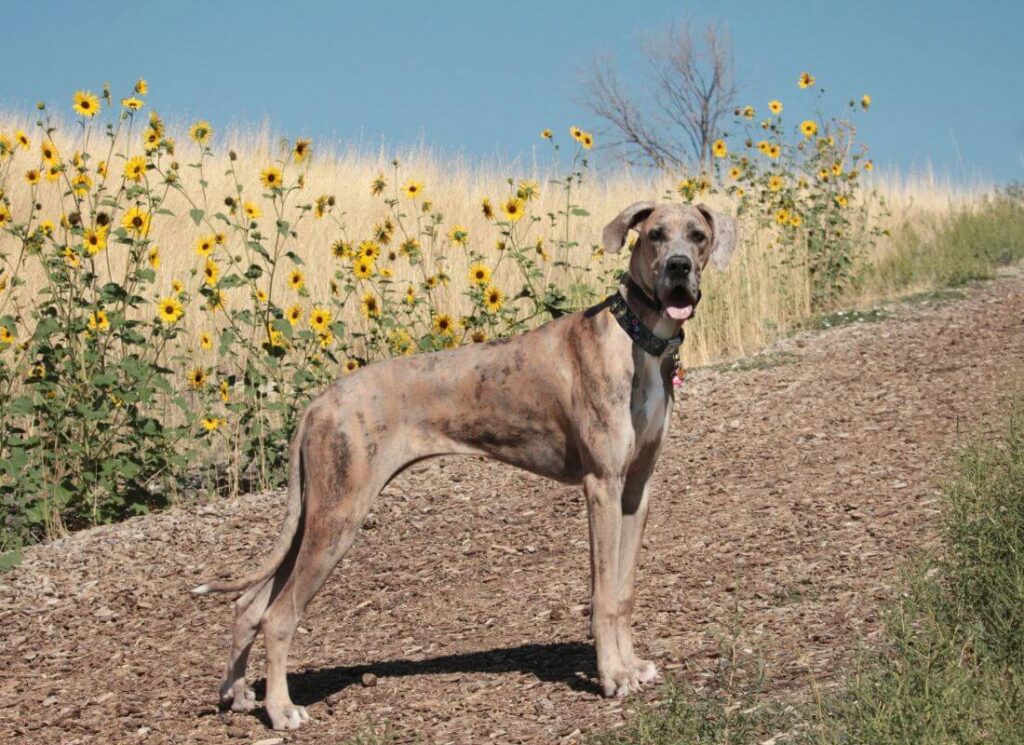
Harnesses for Great Danes
Of course, you’re a Great Dane owner– you want the best for your Gentle Giant. We all do…
We can’t WAIT to get home from work just to squeeze our big dogs to bits and pieces, spoil them and proceed to spend the better part of the time we have off with them.
So, if you’re using a dog harness, chances are you probably are doing so for one of two reasons:
REASON NUMBER 1: You think the harness is the safest option for your giant breed dog.
REASON NUMBER 2: You are in over your head with your BIG DOG and cannot keep them from pulling and choking themselves on walks!
Let’s go ahead and discuss both reasons.
Reason #1: You believe a harness is the safest option
So, you did your research on large dogs, you looked for the ‘no pull harness’ with the mesh lining and padded chest which ought to be extraordinarily comfortable for your Great Dane.
You paid extra for that reflective stitching that is sure to keep them safe from oncoming traffic! You even got fast release buckles incase you ever need to get your large dog out of their harness in a pinch.
Your dog’s comfort matters to you- and it shows.
So, did you cross all your T’s and dog all your I’s?
Well, not exactly.
Great Dane harnesses are BELIEVED to be safe for large dogs and their thick necks, big chests and long spines, but….. they aren’t exactly that.
We will talk about why in just a moment. But first, let’s discuss the second reason you may have purchased a dog harness for your Great Dane.
GENTLE LEADER REVIEW
IS THE GENTLE LEADER ACTUALLY GENTLE?
Reason #2: Your giant dog pulls a lot
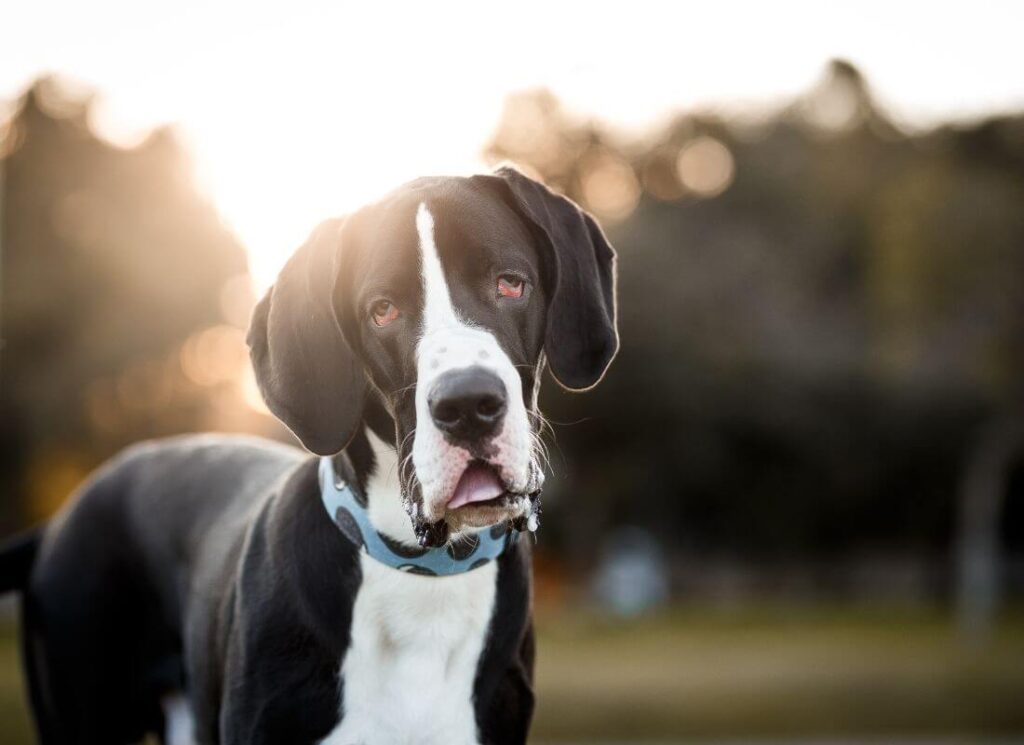
Let’s face it. You might be here because you have a large dog that seems to be walking you and not the other way around.
Great Dane dogs are strong, big dogs!
If you got a Great Dane without fully understanding the training requirements and minuscule window of time you have before they become bigger than you, well, it’s probably getting pretty hard to get them to stop pulling.
So, you did what Sally in the facebook group told you to do… You purchased an Extra Large dog harness that claims to provide EXTRA CONTROL, has a ‘no pull design’, and the reviews even stated that this extremely high quality harness completely TRANSFORMED their dog’s body overnight, changing the owner from a miserable walk to having better control… IN JUST ONE WALK!
RED FLAG…. PLEASE, see the red flag….
Anyways, continuing onward.
Let’s discuss the fun stuff.
Why are harnesses dangerous for a Great Dane’s neck?
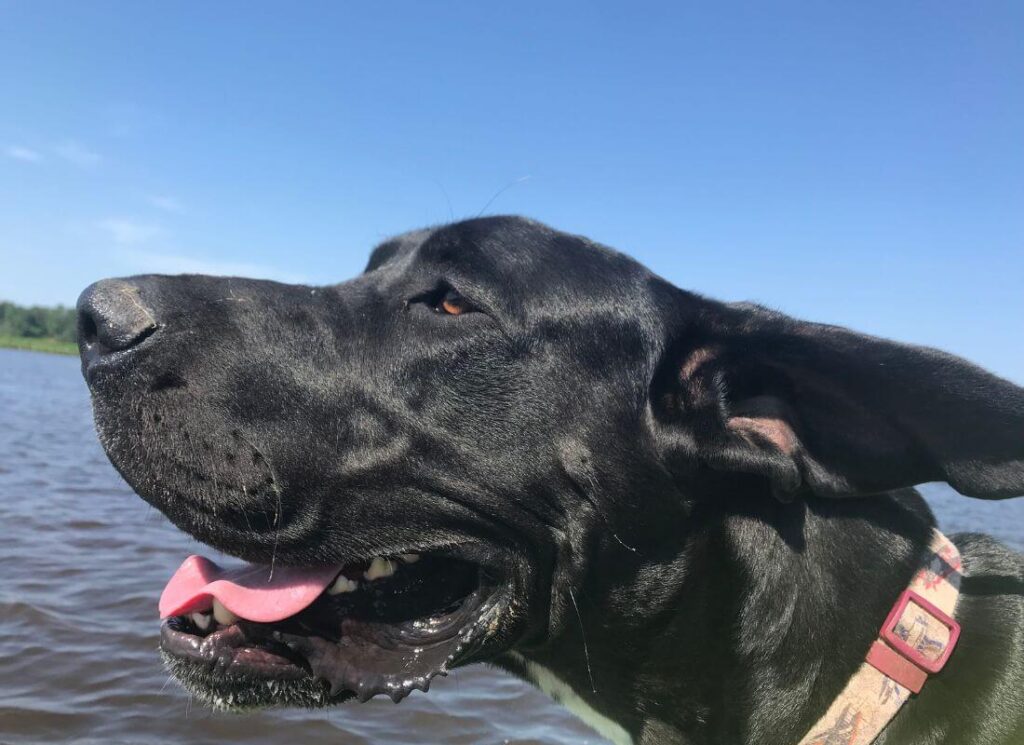
The neck of a Great Dane is as fragile as porcelein and should be treated as such.
Great Danes are prone to spinal and joint disorders such as Wobblers Syndrome and Hip Dysplasia, which are common in large breeds.
Head Harnesses & Gentle Leaders
So, taking in to affect that the neck of a Great Dane is quite literally attached to the dog’s head, any dog harness that is directly placed onto their snout or head in order to gain better control should be completely eliminated.
Think of it this way, when you’re using that ‘Gentle’ Leader to gain complete control on that nice, brisk walk with your Great Dane, you’re ultimately yanking their neck, whether you think so or not.
Additionally, you may even see the dog visible struggle, stress, and get anxiety from using a head halter. There is always a reason for your dog’s stress! “Harnesses that go around the muzzle, also known as a head halter, can present a unique challenge because few dogs easily adjust to them”, Schade says.
“Most do not enjoy the sensation and fight it by pawing at their nose, rolling on the ground, or rubbing their face on their person’s leg,” she says. “Additionally, if the dog races ahead and is jerked back, it might injure its neck.”
Why is a No-Pull Harness Bad for Great Danes?
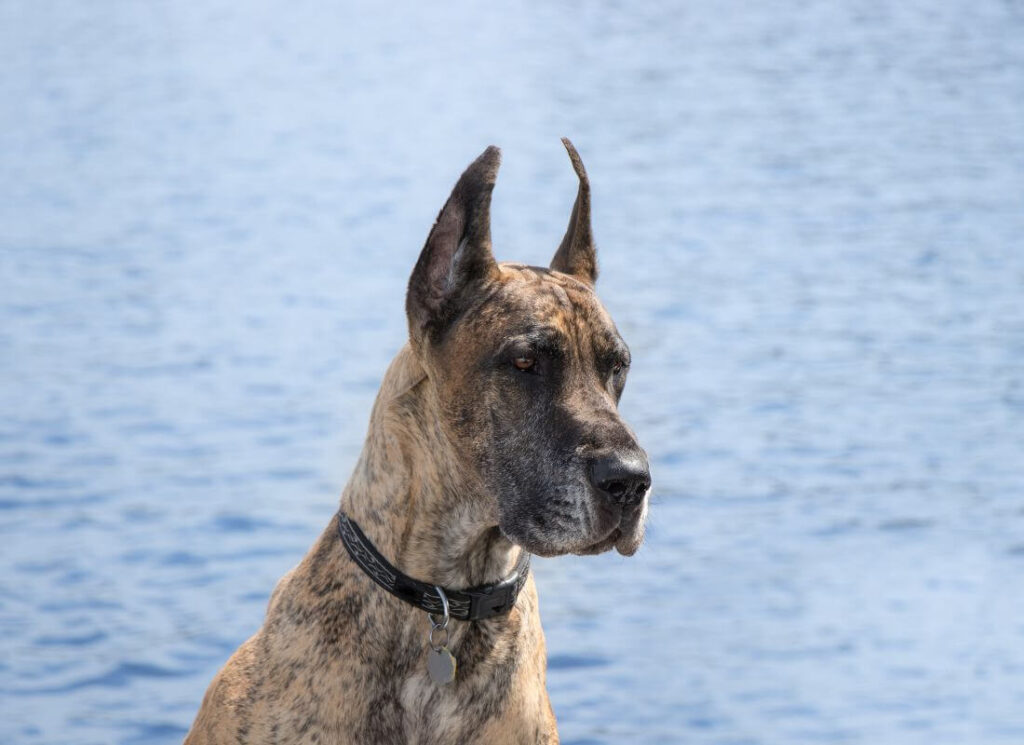
Harnesses are a straight up nightmare for Great Danes.
Why? Because…
- They restrict the way your dog’s body is designed to move
- They create whiplash that is not natural for their skeletal system
First, harnesses restrict the way your dog moves. And if you wake up every single day and restrict your dog’s body from moving in the way it is supposed to move, eventually (and soon) there are going to be issues.
Secondly, using a harness as a means to gain control over your dog on the leash and ‘make them stop pulling’ is inevitably going to make YOU pull on the harness, creating whiplash on their joints.
“I have studied the effect of restrictive harnesses using a well-validated gait analysis system and demonstrated that there are significant alterations in a dog’s gait (both the amount of forward extension of the legs and even the amount of weight borne on the front legs) when wearing the harness, even without a leash attached.” –Christine Zink, DVM, PhD, DACVP, DACVSMR
“As a specialist in canine sports medicine, I have significant concerns about the use of harnesses that wrap around the front of dog’s forelegs, particularly in circumstances like this, where a dog is exercising using a gait that requires forelimb extension”, Zink says.
Why could a harness hurt a dogs chest and shoulders?
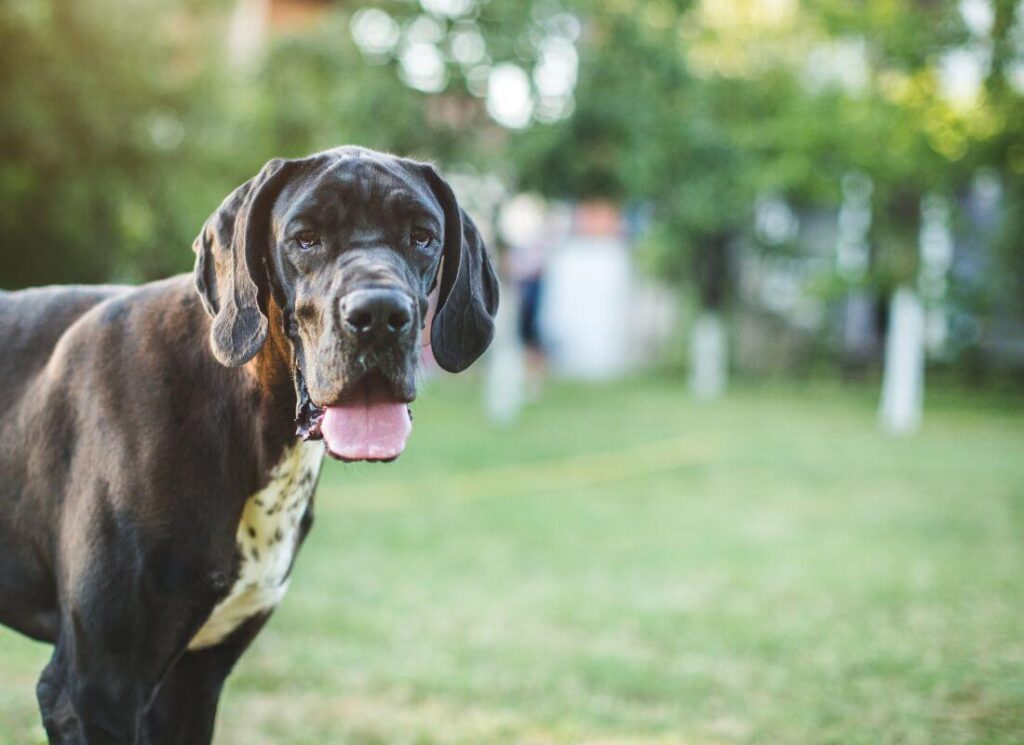
The canine body is all connected, just like the human body.
Manipulating the body of a Great Dane with a tool that pulls from their chest or shoulders can cause long term damage, just as it would to a human.
“Front-hook harnesses, on the other hand, can affect a dog’s natural gait and hinder shoulder movement.” Nelson says these particular harnesses may not be a good choice for dogs who engage in athletic activities.
So, not only are front-hook harnesses dangerous for your dog’s health, but they could also hinder their ability to perform certain activities or exercises! Constant nagging or even slight yanking on everyday walks can add up, affecting the ability of your dog to walk in the way their body has designed them to.
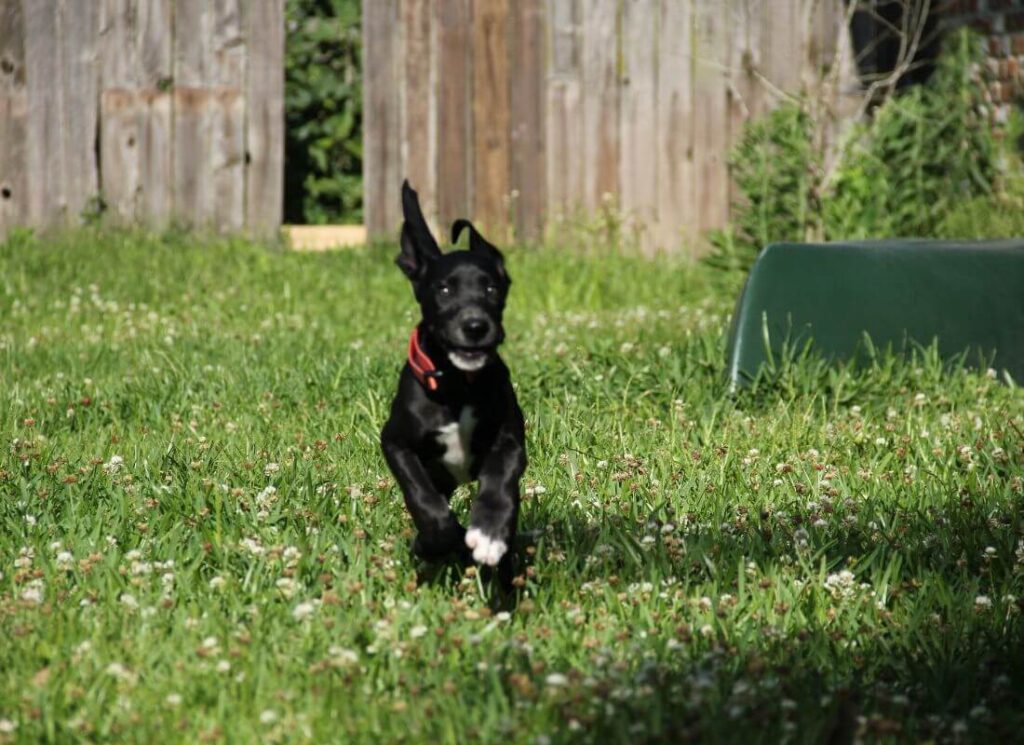
A recent study was conducted at Veterinary Orthopedic & Sports Medicine Group in Annapolis Junction, Maryland to evaluate how five commercially available harnesses affect canine gait characteristics at the trot using a pressure-sensing walkway. The study was conducted by Brittany Jean Carr, DVM, CCRT and Chris Zink, DVM, PhD, CCRT, CVA, CSMT, DACVP, DACVSMR.
“The results of this study demonstrated that wearing a harness affects gait. Interestingly, regardless of the harness type, some dogs were found to be highly reactive to wearing a harness. In fact, even dogs who had been wearing harnesses most of their life and that were thought to be well accustomed to wearing a harness were still found to have significant alterations in gait while wearing a harness, regardless of the type of harness. Overall, wearing a harness was also associated with a longer forelimb stride length, shorter forelimb step length, a greater forelimb total pressure index percentage, and a shorter forelimb gait cycle.”
What is a dog’s “gait”?
You might not know what a dog’s gait means off the top of your head- but you would really quickly learn what it means if your dog started declining in their gait.
A dog’s gait is used to define how they move their legs when walking or running. This includes how high they hold their legs, how much weight is put on each leg, and even the pattern in which they move their legs. All of these factors play into how well a dog moves.
As described above, some many harnesses are actually studied in clinical studies and CHANGE the gait of your dog! THAT’S NOT GOOD- INCASE YOU NEED IT SPELLED OUT.
Long term affects of wearing a harness that alters gait
Your dog may seem fine today. They may seem fine tomorrow. But what about in a few years from now, when they are older and not as spry?
Slowly, you will start to notice changes in the way your dog moves. You may not quickly attribute these changes to the harness, but take it from the data and the experts.
Even some of the ‘best harnesses’ that Sally recommends over and over in that Facebook group may just be causing your Great Dane to age much quicker than you hope.
Common risks of Great Dane harnesses
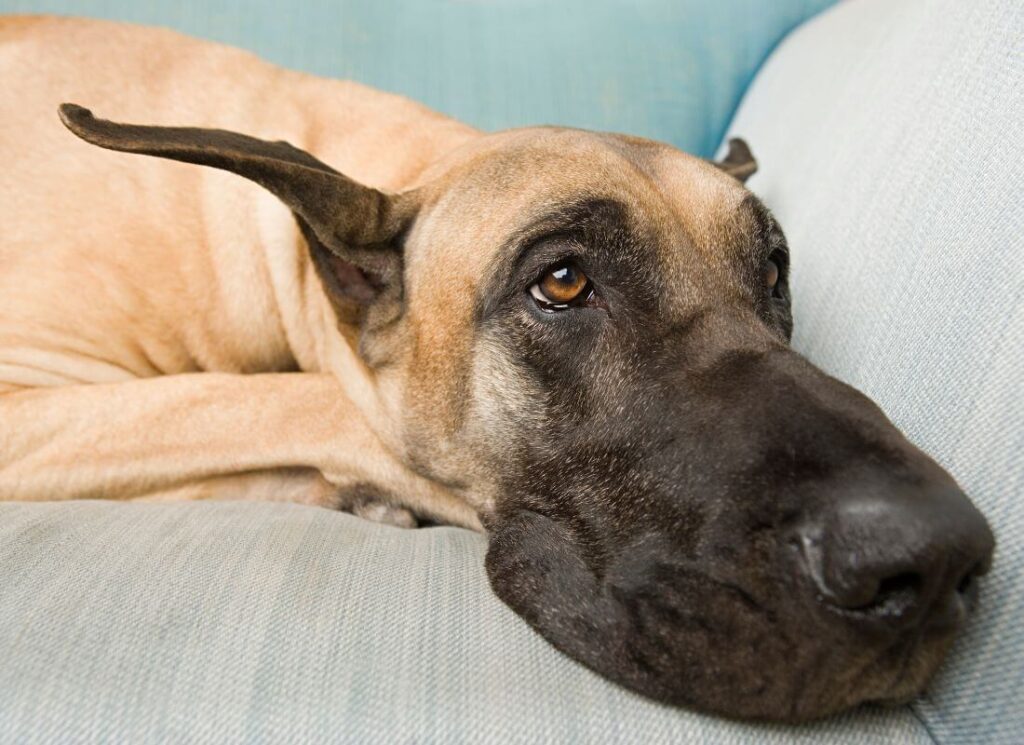
Even what you think might be a ‘good harness’ can have detrimental affects on your dog or Great Dane.
Some of the best harnesses pose threats to our Great Danes. Have a look at some of the risks that Great Dane harnesses could be posing:
Sleeping in a harness
A proper harness is NOT meant to be slept in. Dogs should NOT sleep in a harness OR a collar!!
Sleeping in ANY item can be a huge owner error and cause serious long-term damage, eg. callouses, sores, traumatic injuries, etc.
Sleeping in a harness is potentially risky because it could get caught on something (like the dog’s crate) and become a choking hazard, Nelson adds. “It can also be uncomfortable for a harness to be on 24/7.”
Using a wet harness that doesn’t dry
Be weary of keeping a wet harness on a dog’s body, especially a leather harness.
In addition, pet parents should not leave a wet harness on their dog for a long period of time, as it can cause skin infection, advises Dr. Katie Grzyb, medical director at One Love Animal Hospital in Brooklyn, New York.
Wet items can create yeast and infection, which may go unnoticed until it’s too late.
Leather is also a breeding ground for bacteria, so keep that in mind if you do choose to use a leather harness.
Signs that your dog may have an infection from their harness include:
- Sores or rashes
- Hair loss
- Scratching or chewing at the harness
- Hot spots
- Reddened skin
- Inflammation
- Drainage
- Bad odor
Great Dane Dry Skin: 4 Causes and 4 Treatments
How to Know if Great Dane Skin Bumps are a Problem
Infections on dog’s skin
An entire harness in general can cause infection and irritation on your dog’s skin.
Your dog can develop hot spots at the leash attachment points, irritation along their chest and even painful chafing.
Chin Acne Treatment for Great Dane Dogs
Great Dane Hot Spots
Your dog can also develop skin diseases underneath a harness, such as folliculitis and pyoderma.
Folliculitis is an inflammation of the hair follicles, and pyoderma is a bacterial infection of the skin.
“Monitor hidden areas such as armpits and under the chest a few times a week to make sure that the harness is not causing skin irritation from rubbing,” Grzyb adds.
Using Great Dane harnesses can in fact harm their throat and trachea.
ESPECIALLY for dogs with pre-existing throat conditions or breathing problems, it is crucial to not use a front clip adjustable harness. This no pull design can put a significant amount of pressure on your dog’s windpipe, which can cause more coughing and hacking, and irritate an already pre-existing condition.
“A halter with a back clip, as opposed to a front clip, may be better for brachycephalic (short-nosed dogs), small breeds, and dogs with tracheal collapse or other tracheal issues. This is because front-clip harnesses may put too much pressure on the throat region when the dog pulls on the leash”, says Dr. Susan C. Nelson, clinical professor at the Veterinary Health Center at Kansas State University.
Harnesses are not a replacement for training
Buying a harness for Great Danes is not a ‘quick fix’ for training your dog.
You can buy a sturdy harness with high quality materials. You can buy a $200 Great Dane tactical harness, research endlessly the best harnesses for Great Danes… look into durable materials and superior comfort.
But, the ultimate control of your dog on leash lies in the training and relationship that you build with them.
Victoria Schade, a dog trainer, notes that a harness does not, by definition, decrease pulling.
It is time to stop making excuses for our dog’s behavior on the leash and start taking actions to make them more successful– without the dangers of a harness.
Why is Leash Training Dogs So Dang Hard? 8 Things I Learned About Leash Training
3 Fast Tips on How to Train Your Great Dane to Walk on a Leash
What is the best leash for Great Danes?
Harnesses for car safety
Driving with dogs can be very scary and extremely dangerous.
Dogs should be contained in the car.
The Center for Pet Safety is the ONLY resource that you should use to verify whether the tool you are looking at has been crash tested and approved to keep your dog safe in the car.
According to their website, as of July 2019, only 2 dog car safety companies making harnesses that have been tested and approved by the Center for Pet Safety.
DO YOUR RESEARCH! Our gentle giants deserve it.
11 Ways to Calm Dog Anxiety in Car Rides
Good harnesses for Great Danes
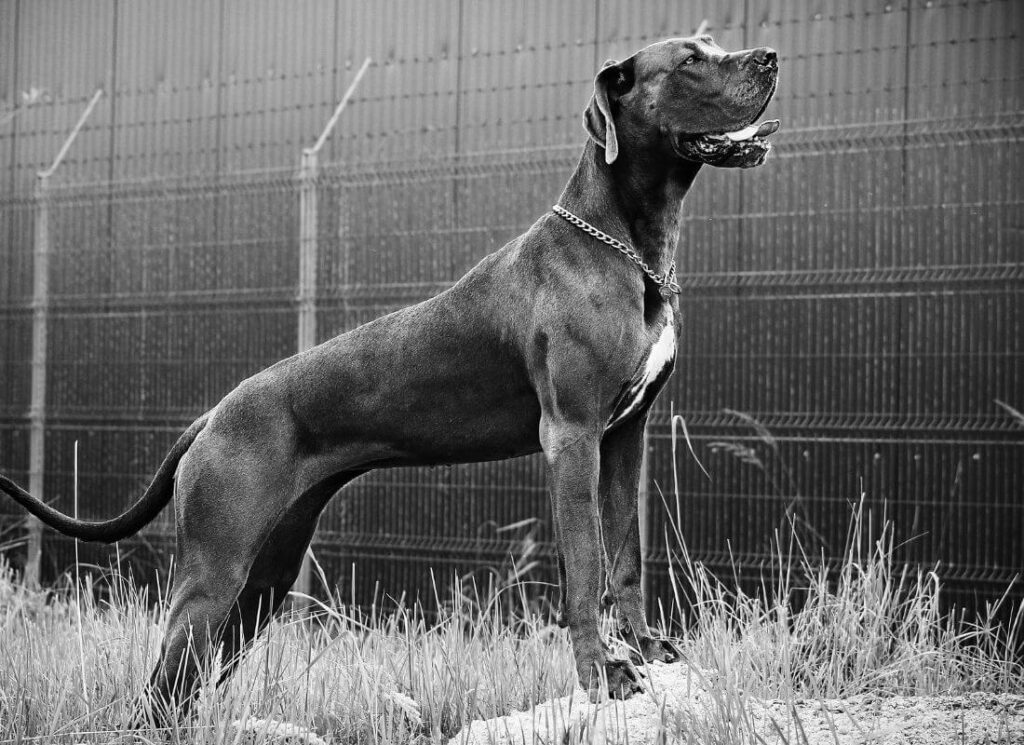
The answer is, not that many, but yes.
The best harnesses for Great Danes include those that:
- Do not limit your dog’s ability to move in their natural gait
- Serve a purpose: Working dogs/service dogs wear a harness at times for a specific reason (should still not limit their gait)
- Are crash tested and to be worn as a seatbelt
- Veterinarian checked and approved for your dog’s specific body
First off, even though I think I have a good grip on dogs and what they need- I usually have found that I don’t.
So, I trust science, data and experts.
Now that you know that- here are the recommendations for the best harness based on safety, health and features.
Best crash tested harnesses
If you’re looking for a crash tested harness, you’re really only given a few options.
In 2011 the Center for Pet Safety conducted a pilot study to investigate the crashworthiness of pet travel harnesses. Based on the findings of that study CPS went on to complete a landmark pet travel harness study in 2013, sponsored by Subaru of America.
VIEW THE HARNESS STUDY RESULTS HERE
Right now, there are only two harnesses that have been crash tested for dogs in vehicles.
- Manufacturer Website: Sleepypod.com
- Manufacturer’s Website: ZuGoPet.com
Since the ZuGoPet Harness only proved to be effective in dogs up to 25 lbs, we can count that out for your big ol’ Great Dane.
That leaves us with the Sleepypod.
SLEEPYPOD CRASH TESTED X LARGE HARNESS
The Sleepypod Harness comes in two styles: The Sport and the ClickIt.
Since the Sport is only crash tested for dogs under 25 lbs, again we are left with the ClickIt.
CLICKIT SLEEPYPOD HARNESS
The ClickIt Harness by Sleepypod is currently the only (and best) harness on the market for car safety for large/giant breed dogs.
It is crash tested up to 110 lbs (for the XL), secures nicely into your dog’s seatbelt through two leash attachment points (somewhat around the shoulders), and has a reflective material / reflective trim.
The company states that the harness can be worn for working dogs or as a standard harness for leash walking, but we always recommend speaking to your veterinarian regarding your dog’s specific gait.
HELP-EM-UP Harness for Mobility Issues
If you’re like me- you are a Great Dane mama to a pupper with a mobility disease.
My Great Dane has struggled with Wobblers for over 1 year now and I do everything to help her mobility.
There are Great Dane harnesses made for the purpose of being able to help them maintain their mobility through all life stages.
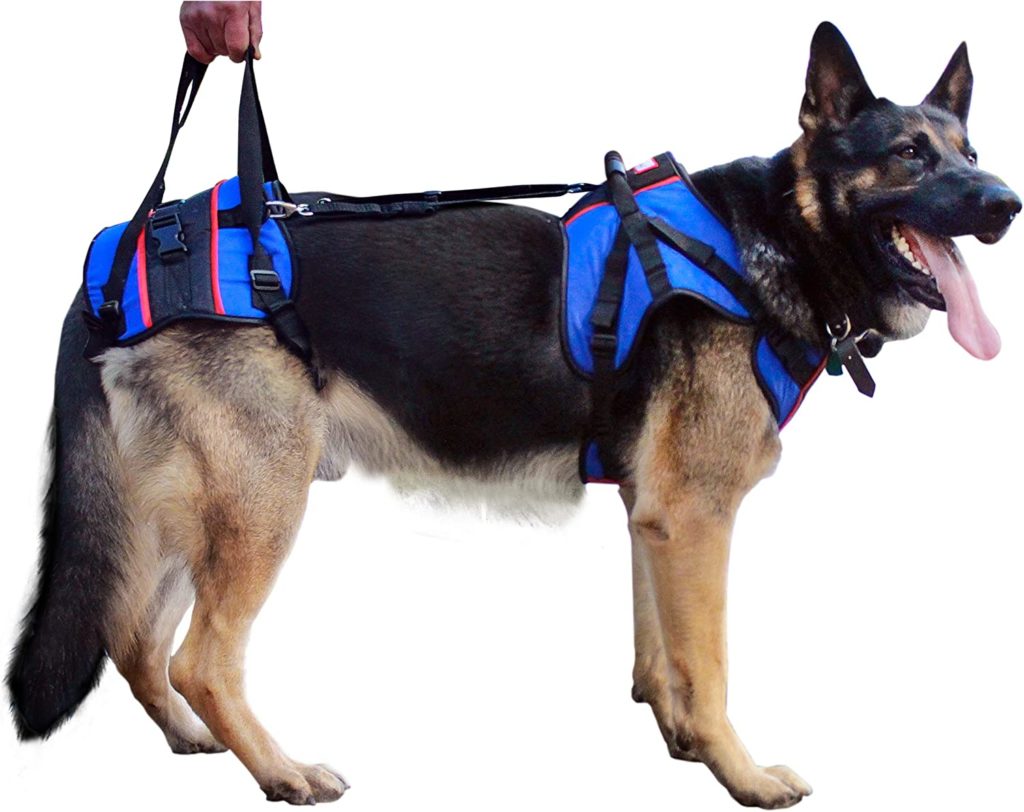
HELP-EM-UP HARNESS CAN HELP YOU PROVIDE MOBILITY
I recommend the Help-em-up Harness which is used for Great Danes (and all other dogs) that struggle with:
- Hip Dysplasia
- Arthritis
- Elbow Dysplasia
- Luxating Patella
- Wobblers
- IVDD (Intervertebral Disc Disease)
- And More!
The Help-em-up Harness is one of the best on the market for mobility support.
So, if you’re looking into harnesses for your Great Dane- think again.
There are other purposes for harnesses, but they should never be used as a main walking/hiking harness.
Your dog’s mobility and health matters.
READ MORE:
5 Big Reasons to Have Your Dog’s Teeth Cleaned by a Veterinarian
Why Prong Collars ROCK
Gentle Leader vs. Prong Collar: Which is Better for Your Dog?
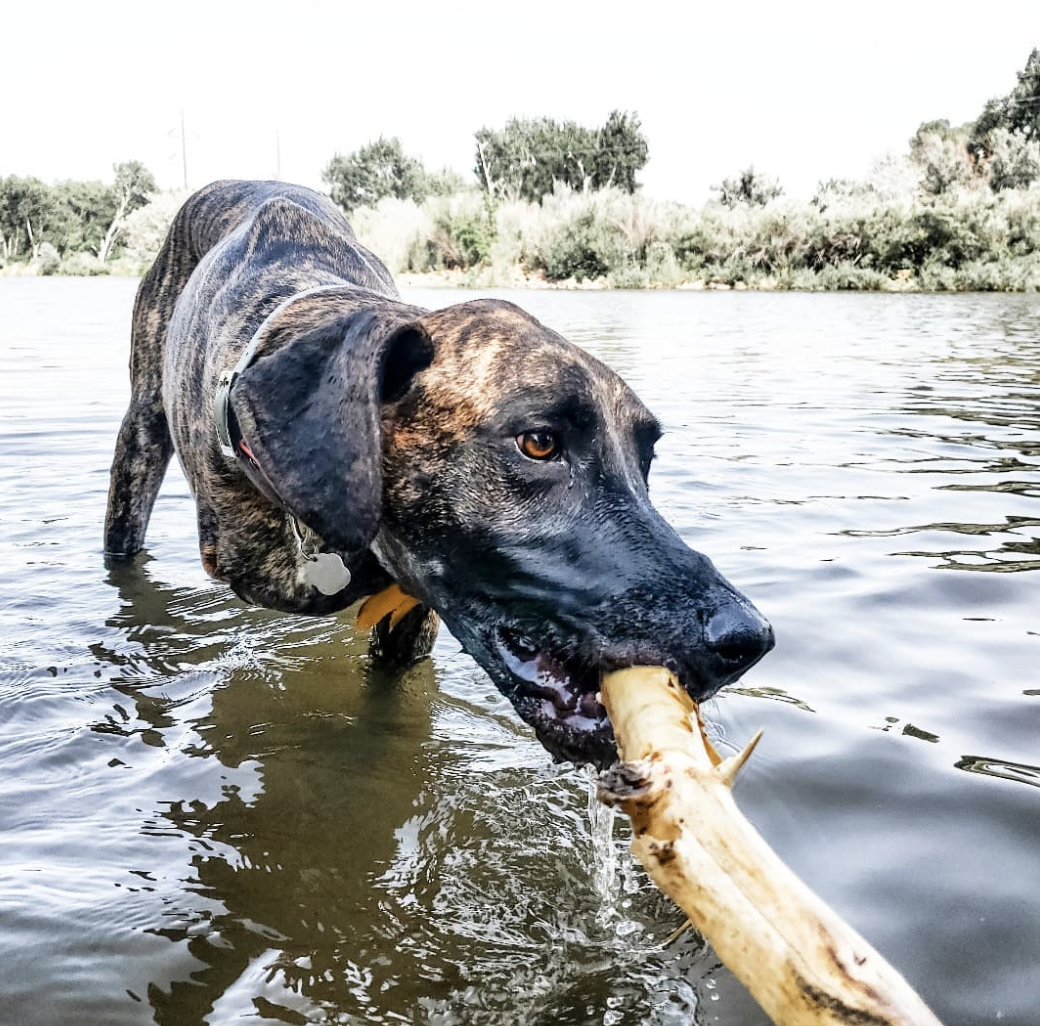
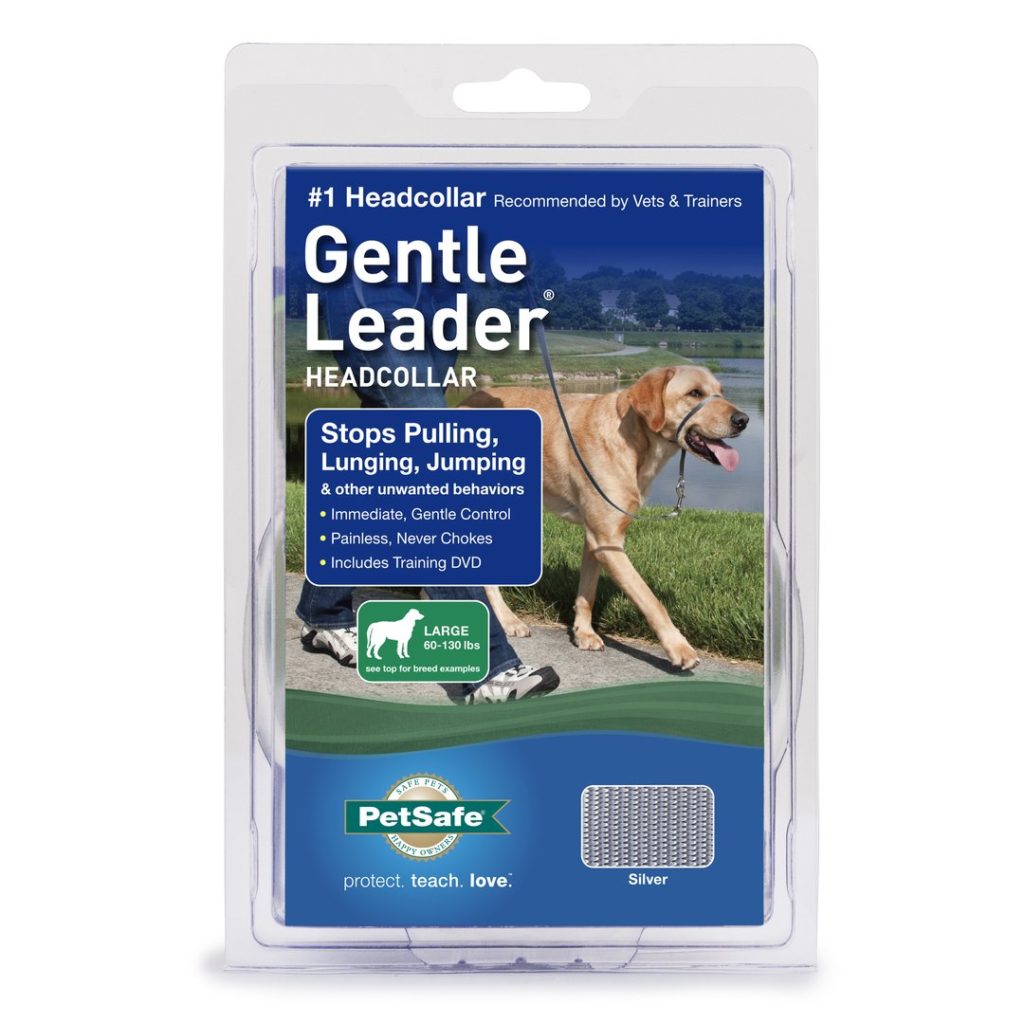
Leave a Reply